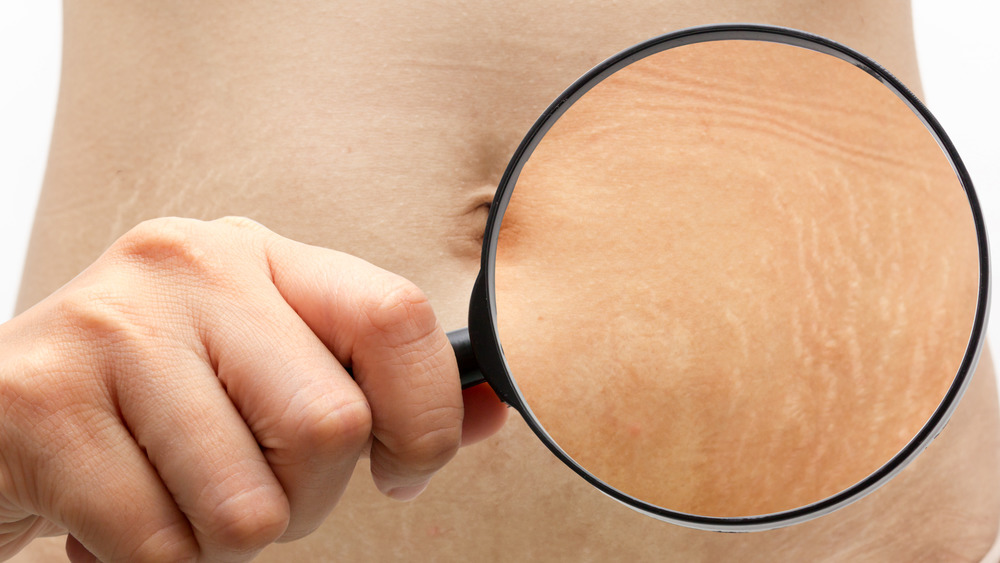What Happens To Your Skin After Giving Birth
Most moms are familiar with the pregnancy glow. That rosy flush you may exude while growing a bun in the oven is often due to an increased amount of hormones which are released during pregnancy (via Healthline). The glow is wonderful, and while it may continue for a little while post-birth, you may also start to notice some other changes to your body, including your skin.
As well as bringing home a new addition from the hospital, you may also be bringing some noticeable stretch marks – also known as tiger stripes (shout out to Chrissy Teigen and Lady Gaga for showing how normal they are!). Both your body and skin need to stretch in order to make room for growing life, and the longevity of these stripes could be directly linked to your mother's stripes, or lack thereof. Stephen Mulholland, a plastic surgeon based in Toronto, explains that while both weight gain and the time it takes to lose the baby weight are factors in the visibility of stretch marks, it is mostly down to genetics. "Some women heal these tears with beautiful scars and you can hardly see them, while others heal with bad scars," he says. "The difference is in your DNA and the quality and resiliency of your collagen. Ultimately, you're fighting the genetic code of your parents and what they gave you" (via Today's Parent).
Move over, stretch marks, because there are more additions
Another unexpected addition to your skin that could happen while pregnant and continue afterward is the increase of moles and skin tags. Just like with the pregnancy glow, you can blame the excess hormones for inviting these new skin formations to the post-pregnancy party. Some may go away on their own, while others might be there to stay even after you give birth (per The Bump).
Adding to tiger stripes, new moles, and skin tags, you may also find yourself dealing with what many refer to as "the mask of pregnancy." Dr. Alyssa Dweck tells Health Digest why your skin may suddenly be sporting darker patches. "Pigment changes can happen everywhere, leading to dark patches on the skin, but many women also notice the areola and the labia are darker as well. When those changes appear on the cheeks of the face, the scientific term is 'melasma,'" she explains.
While the discovery of these skin issues may be emotionally frustrating for many new mothers to cope with, don't be too hard on yourself. Your body just did an amazing thing! And if you are uncomfortable living with these new additions permanently, then consider making a visit to your doctor to discuss removal options.

